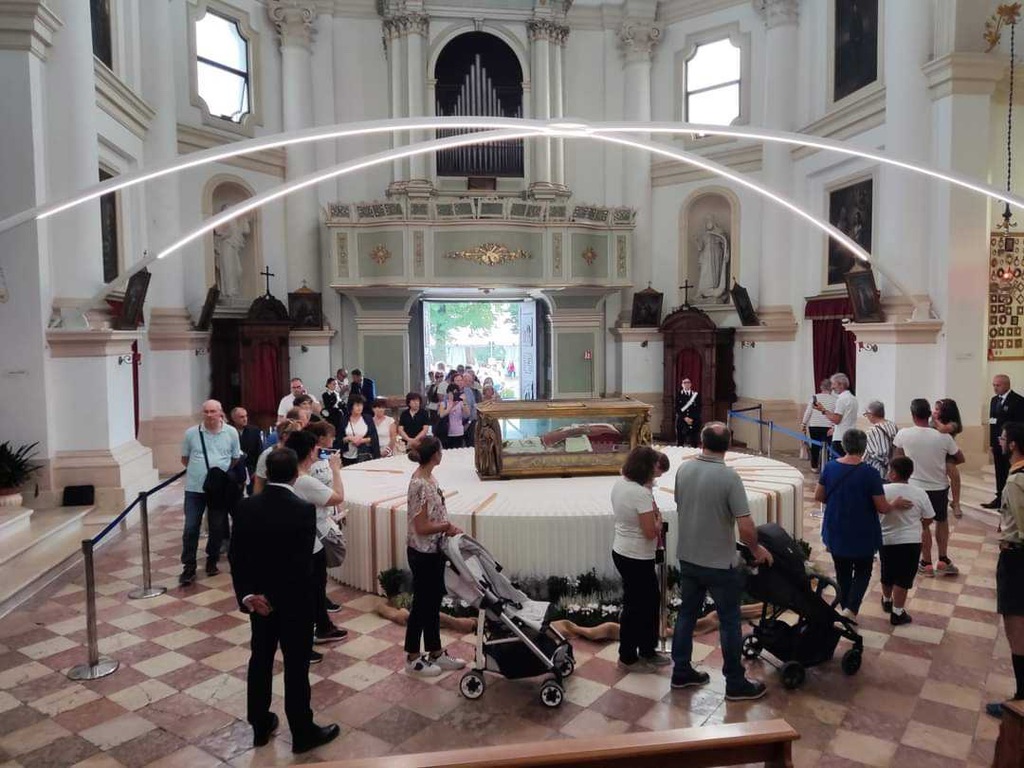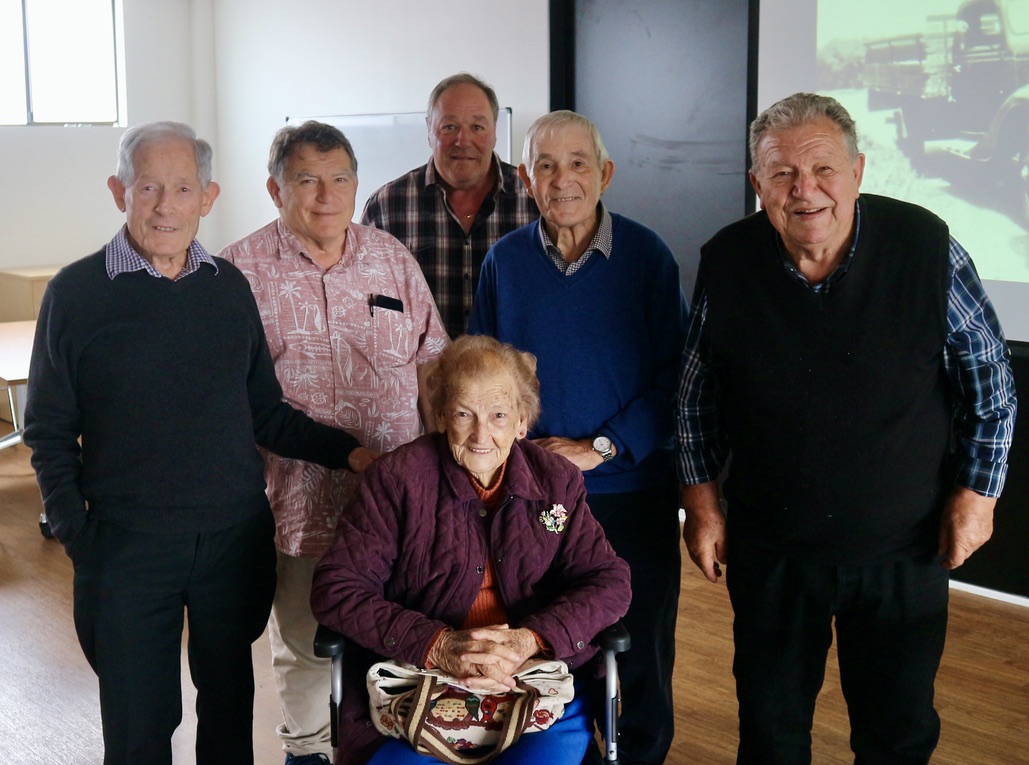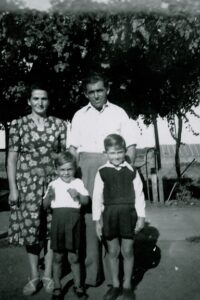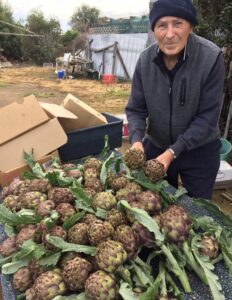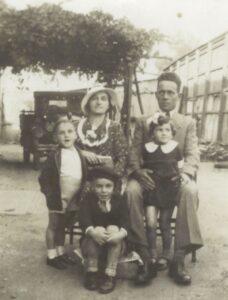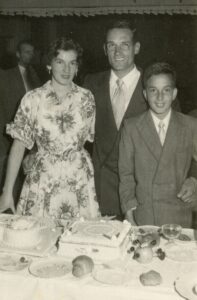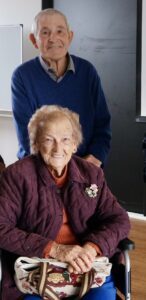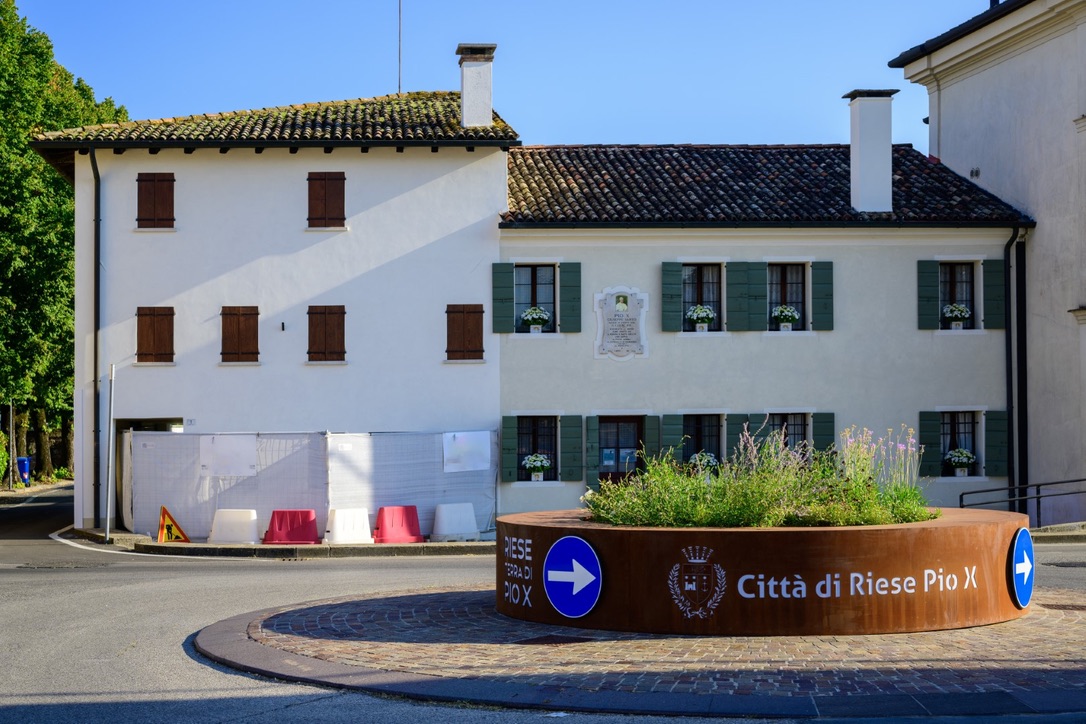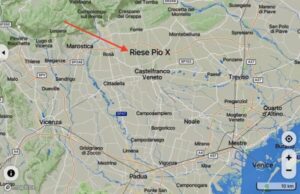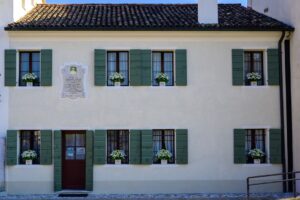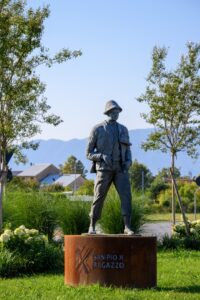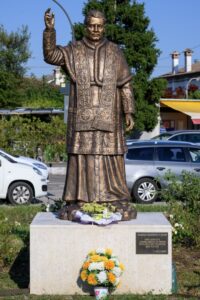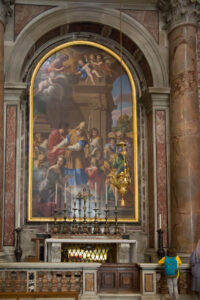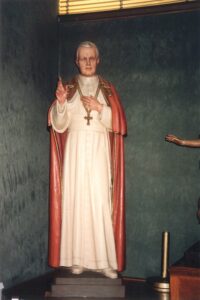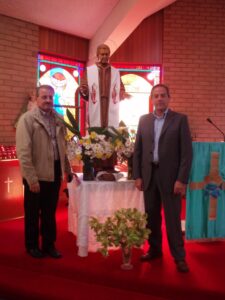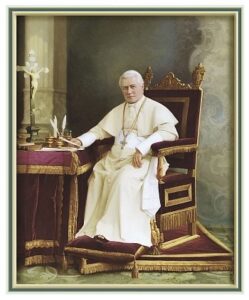Guest blogger, Remo Berno, reports on the experience of the recent pilgrimage when the body of St Pius X returned to the village of Riese Pio X. Pope Pius X had been born in the village in 1835. In the image above, people file past the body of St Pius X.
The famous words (“Ritornerò”) were pronounced by the Patriarch of Venice, Cardinal Giuseppe Sarto, in 1903 when he farewelled his beloved fellow Venetian citizens that flocked to the railway station as he was to leave Venice to attend the Conclave of Cardinals. He had been summoned by the Vatican City to elect the new pope after the death of Pope Leo XIII. The many Venetians there showed their disappointment for his departure. They had experienced his great stature as head of the Catholic Church of Veneto for nine years. It could well be that they foresaw his election as the new pope.
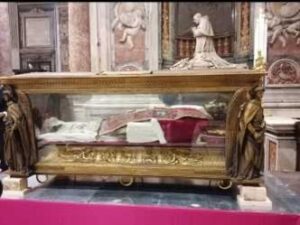
On departure Cardinal Sarto addressed the crowd that came to see him off, saying “O vivo o morto, ritornerò” (or alive or dead, I will return). It’s history, that he became Pope Pius X and was head of the Roman Catholic Church for 11 years. Pope Pius X died in 1914 and in 1954 he was proclaimed a Saint.
“Peregrinatio Corporis” of Saint Pius X to his birthplace
Once he became Pope Pius X, Giuseppe Sarto never returned to his birthplace. However, Pope Pius X never forgot his town of origin, Riese. In his 11 years in the Vatican, he often prayed to Our Lady of Cendrole (“Madonna delle Cendrole”) as he did when he was a boy. The Pope sent many gifts to his fellow citizens in Riese, and these can be now seen in his museum next to his home. ( Click here for virtual tour )
For us, his fellow citizens that live in Riese Pio X and for the very many “Riesini” (people from Riese) that migrated from this small village to populate so many cities throughout the world, Saint Pius X is our most famous citizen. This year is the 120th anniversary of his election as Pope. To mark this important historical event, the Giuseppe Sarto Foundation, the Treviso Diocese, the parish and the municipality of Riese Pio X honoured our great saint by means of a “Peregrinatio Corporis”. For the first time after becoming Pope Pius X, the mortal remains of Giuseppe Melchiore Sarto returned to his town of birth for 8 days and many thousands of pilgrims paid homage to this saint in the Marian Sanctuary in Cendrole. The young Giuseppe Sarto often walked these two kilometres from his home to this church, to receive the grace of Our Lady in his way as a Catholic believer that eventually elevated him to holiness.
“Bentornato a casa, Bepi” (Welcome back home, Giuseppe)
The mortal remains of Saint Pius X in his glass coffin travelled 550 km to Riese Pio X from the Vatican, on board a vehicle, specifically equipped for the journey. It arrived in Riese on Saturday 7th September in the afternoon and the first stop was in front of the local Church where more than two thousand people eagerly awaited to catch the first glimpse of Saint Pius X.
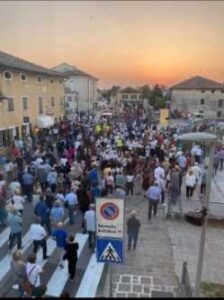
His next stop was in front of the house where he was born on 2nd June 1835. He lived here to the age of 15, when he entered the Seminary of Padova for his clerical studies. On 18th September 1858 he was ordained a priest. The following day he celebrated his first mass in the Church of his hometown, Riese. Giuseppe Sarto’s father, Giovanni Battista died in 1852 whilst the future pope was only a boy of 17. His mother, Margherita Sanson, however, lived in her house in Riese for many years after. Father Giuseppe Sarto often visited his mother until her death in 1894. At that time Giuseppe Sarto was Bishop of Mantova.
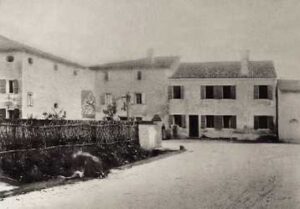
Saint Pius X’s body was in front of his home on this Saturday afternoon and this picture will remain a magical moment for all of us that were there. The Mayor of Riese Pio X, Matteo Guidolin, and the Parish Priest, Don Giorgio Piva and the thousands of spectators hailed his return, “Ben tornato a casa, Bepi” = “Welcome back home, Giuseppe.”

His destination for this “Peregrinatio Corporis” was his beloved Cendrole Sanctuary where he rested till his departure on Sunday 15th October.
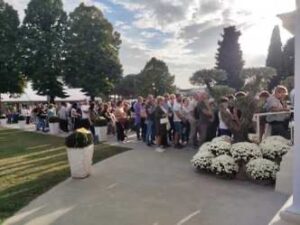
The Pilgrimage
As for tens of thousands before me, on Saturday 14th my pilgrimage commenced in the Church of Riese Pio X. I was accompanied by my family and some friends. Together we stopped in front of the font where our saint was baptized on 3rd June 1835, the day after his birth. It is also the font where my two children, Alberto and Daniela, received their baptism. Behind the altar we passed the tomb that held the body of Pope Pius X for the time from his burial, in 1914, till 1954, when he was proclaimed saint and elevated to the honour of exposure in Saint Peter’s Basilica. The former tomb that held his body, was sent as a relic to his church in Riese.
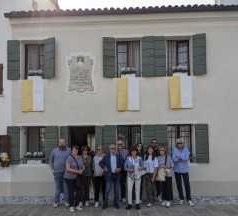
Leaving the parish church, we walked on the same the street that Giuseppe Sarto had walked. A quick stop took us through his home to remember where the saint lived his childhood. From there it was a 2 km walk to Cendrole, the same path that Giuseppe Sarto covered so many times. In this small area in Riese, there is a beautiful Marian Sanctury that now stands on the grounds where there was, in origin, a tiny church, that dates to the year 972. Ever since, the “Madonna di Cendrole” (Our Lady of Cendrole) has been venerated by the Catholic Community. Here, the saint laid for 8 days, and the processions continued each day, from 9 am to 10 pm.
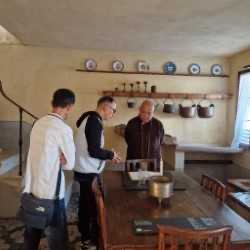
Over 55,000 people visited the temporary resting place of Saint Pius X. They were mostly Italians but also very many foreigners. One visitor was the Reverend Buddhist monk, Tich Quang Dao, spiritual leader of the most important Buddhist Temple in France. Many pilgrims also came from the hundreds of parishes that throughout the world are named after Saint Pius X.
During the week, many were the moments that offered me special emotions. I was one of 900 people (mostly volunteers) who assisted with the organisation of these 8 days of Saint Pius X’s presence. The atmosphere that was perceived by all the pilgrims, was one of peace and serenity.
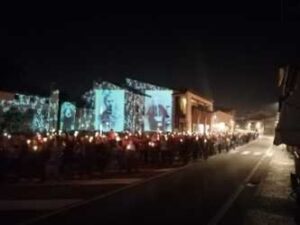
The main road in Riese Pio X, that leads to the Marian Sanctuary of Cendrole was closed to vehicle traffic from 9 am. to 10 pm. to allow the processions to flow safely with respect towards the saint.
On three different days, I was fortunate to be a reader of prayers in the Sanctuary, while the procession passed in front of Saint Pius X in his casket. I saw people praying in respectful silence and contemplation, people genuflecting, people crying. It was impossible for me not to be touched by such reverence. I read psalms and prayers written by the pilgrims. A very touching one was written by a lady who thanked Saint Pius X for answering her prayers many years ago when she was healed from tuberculosis. How great was this man to be worshipped by so many people who had never met him and who had vaguely heard about his life that spanned from 109 to 188 years ago?

It has been an exceptional experience for me and my family and for the many thousands of pilgrims. Often during this past week, my mind went back to my parents and all that they did for me, carrying in their heart the holiness of their fellow citizen.
In the local newspaper ‘La Tribuna di Treviso’ of the Friday 13th, a 78-year-old migrant, Vito Porcellato, gave an interview. He was born in Riese and in 1966, migrated to Canada and eventually settled in the city of Guelph in the Ontario province. He and his family travelled to Riese Pio X especially for this occasion, to be part of this extraordinary event. He said, ‘Saint Pius X was the figure that kept us linked to our birthplace. Once a year, all of us “Riesini” and many other migrants celebrate his holy day. On many tombstones in the Guelph cemetery, you will find an image of this holy saint’.
It is no wonder that Saint Pius X has become the patron saint of the “Trevisani nel Mondo” (People who originate from the Treviso province and live in foreign cities) and that his name has been given to so many parishes throughout the world.
Remo Berno
22 October 2023
All photos supplied by Remo.
